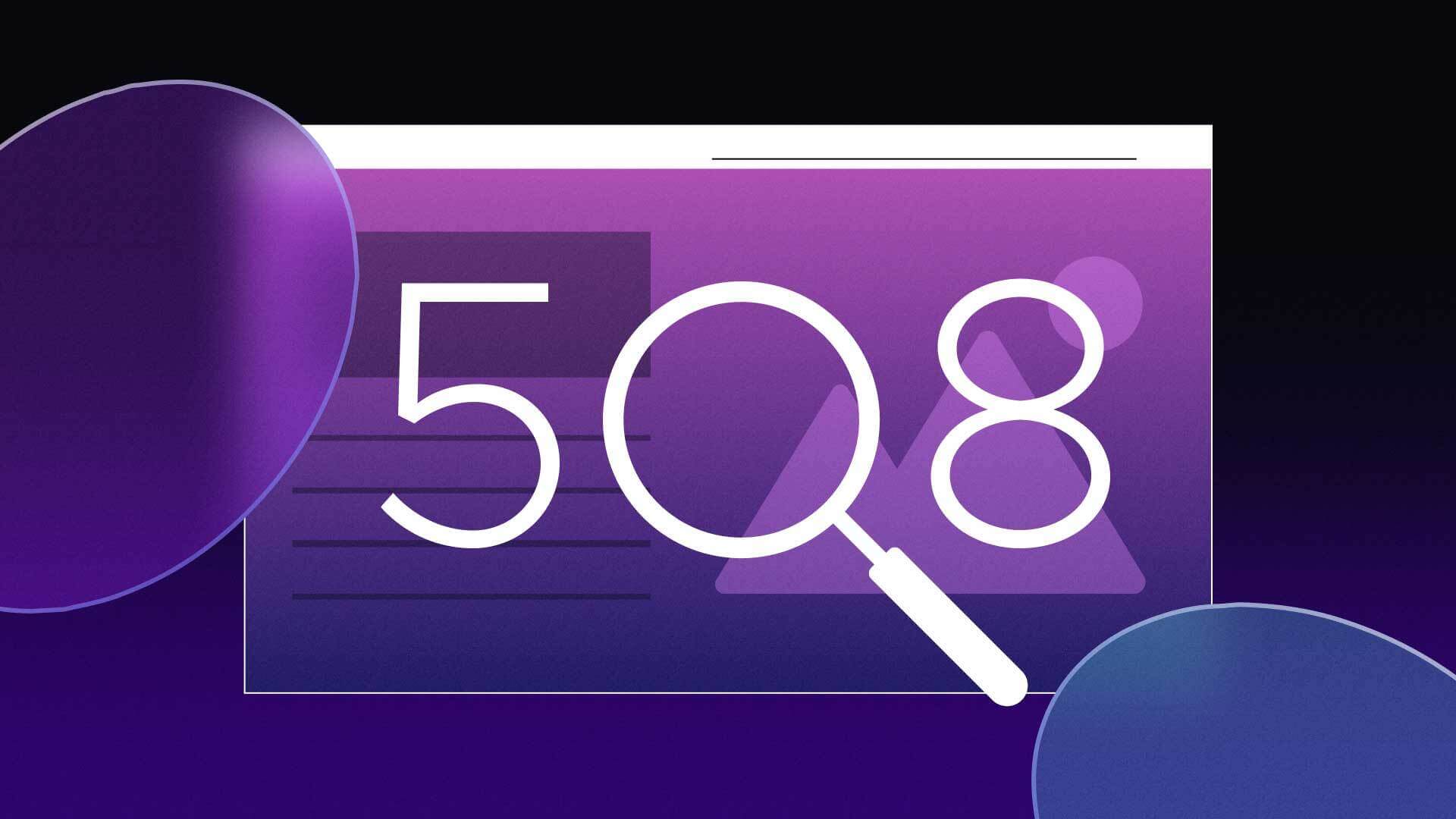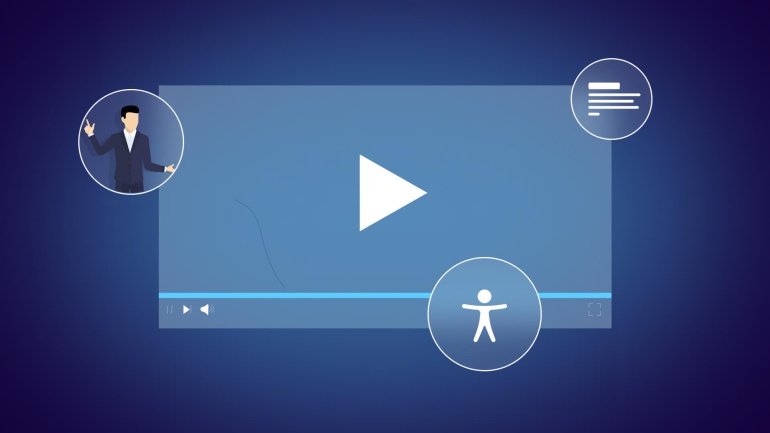2023 marks the 50th anniversary of the Rehabilitation Act of 1973. Let’s review the law, 508 compliance, and its impact on website accessibility in the United States.
The Rehabilitation Act is a landmark civil rights legislation passed to protect the rights of people with disabilities. The act makes it unlawful for federal agencies and those receiving federal dollars to limit access to services or benefits based on disability.
The Rehabilitation Act requires federal resources, such as buildings, to provide handicap accommodations for people with physical, visual, hearing, and cognitive disabilities. This includes features such as wide door thresholds, ramps, elevators, Braille signage, curb cuts, and accessible parking spaces.
The Rehabilitation Act & Web Accessibility
This law also plays a significant role in the issue of web accessibility and what is lawfully required by agencies to provide. Section 504 and Section 508 of the Rehabilitation Act provide the foundation for federal website accessibility requirements and design standards of information and communication technology (ICT).
These design guidelines, which are set according to the Web Accessibility Content Guidelines 2.0 Level AA, assure people with disabilities can access information and services by making websites perceivable, operable, understandable, and robust. It also means digital resources are accessible for those who depend on screen readers and keyboard-only navigation.
Section 508 and WCAG standards require specific design elements to accomplish this, including:
- Text alternative descriptions for images
- Captions and transcripts for audio and video recordings
- Strong color contrast between text and background
- Resizable elements
What Section 508 Covers
In 1998, the Rehabilitation Act was amended to account for the emergence and prevalence of ICT. The change made it illegal for the federal government and its benefactors to purchase or support digital technology that discriminated against individuals based on their abilities.
Section 508 impacts:
- Software
- Kiosks
- Electronic documents
- Websites
The U.S. Access Board was given the authority to approve standards and criteria for what “accessible” meant. Those standards were initially rolled out in the year 2000 as the Electronic and Information Technology Accessibility Standards, which included several enforcement mechanisms.
Over the next decade, Section 508 web accessibility standards were reviewed and refreshed. In 2017, the U.S. Access Board adopted the World Wide Web Consortium’s (W3C’s) Web Content Accessibility Guidelines (WCAG) 2.0 Level AA compliance criteria as its official standards.
Why Section 508 is Important
Though Section 508 is limited in its jurisdiction, it represents a significant development in the U.S. stance on web-accessible design. The most direct impact of Section 508 is that the federal government cannot offer goods, services, or benefits through digital and physical resources that prevent those with disabilities from participating.
In addition to adding teeth to the Rehabilitation Act, Section 508 was also the first-ever web accessibility standard in the U.S. While WCAG 1.0 guidelines had already been published several years earlier, the original Section 508 standards were the first enforceable government regulations for digital access.
Because accessible design for websites is complex and represents a significant expense and investment, many organizations and agencies have been prone to disregard web accessibility and drag their feet on bringing their resources under compliance. Section 508 assures government agencies are held accountable for providing equal access.
Who Should Meet Section 508 Compliance Requirements?
The Rehabilitation Act applies to federal agencies, employers, and organizations receiving federal funding. Because states accept federal transfer payments to prop up numerous programs, many have passed laws adopting Section 508 requirements.
The private sector and businesses are not subject to Section 508 rules directly. However, there are many cases where companies choose to freely become Section 508 compliant. For example, private colleges and contractors may depend on federal funding to provide services. These organizations are required to meet Section 508 standards to qualify for a grant application in Request For Proposal (RFP) processes.
The Difference Between ADA & 508 Accessibility Standards
While Section 508 accessibility standards strictly apply to the federal government and those benefiting from federal dollars, the Americans with Disabilities Act (ADA) passed in 1990 seeks to expand those expectations to state and local governments, employers, and private businesses providing public accommodations, such as retail stores and restaurants.
Regarding web accessibility, the biggest difference between Section 508 and the ADA is that Section 508 explicitly provides technical standards for what constitutes a website as “accessible.” The ADA was passed in 1990 before the first website was even launched and has not been refreshed to account for new technology, leaving its impact ambiguous, especially for private organization websites.
The U.S. Department of Justice insists the ADA applies to websites and digital resources. However, it has failed to explicitly identify a set of standards that should be followed, such as what Section 508 has done with WCAG 2.0 AA guidelines.
The failure to codify web accessibility under the ADA as such has resulted in contradicting court precedence in different judicial districts across the nation. Some federal courts have ruled that the ADA does not apply at all to websites, while others have determined that websites are only impacted by the ADA if they are an extension of a physical location.
Tools to Help Meet Section 508 Standards
The use of accessibility service tools has become an integral part of the accessibility compliance industry. There are a number of compliance resources for entities subject to Section 508 standards. The U.S. General Services Administration (GSA) provides training, tools, and technical information for Section 508 compliance through www.section508.gov.
Web Testing Tools
The Accessible Name & Description Inspector (ANDI) is a free extension developed through the Social Security Administration and recommended by the GSA that can be used simply by bookmarking the page in a web browser. The program alerts web developers to potential accessibility and Section 508 violations.
The Paciello Group’s Color Contrast Analyzer (CCA) is another GSA-recommended tool for Section 508 compliance with color contrast standards. The tool can detect areas of weak contrast luminance between text and background colors.
Web Accessibility Overlays
Agencies, colleges, and federal contractors can also consider adding website overlay technology to their websites as compliance tools. Robust website accessibility overlay products are making Section 508 accessibility and WCAG compliance easier and more affordable.
While GSA-recommended tools and similar programs help alert web developers to violations, they do not provide solutions for the issues they identify. Accessibility overlays leverage artificial intelligence to help developers implement code-level accessibility remediations when problems are identified. Overlays, such as the one on whitehouse.gov, also add a user-facing accessibility widget interface to a webpage that allows someone to toggle accessibility preferences, such as high contrast mode and resizing text.



